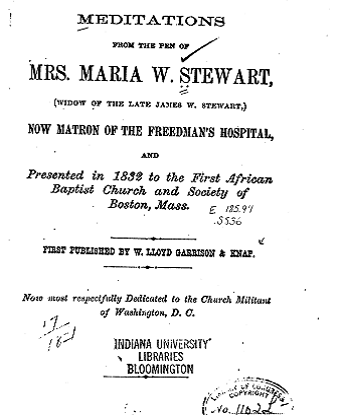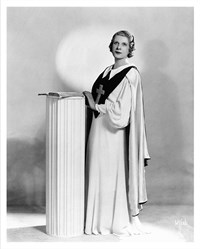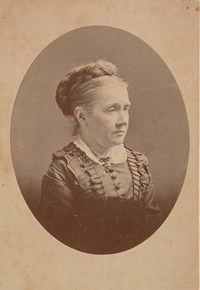- Boston African American National Historic Site (25)
- Boston National Historical Park (19)
- Women's Rights National Historical Park (19)
- Yellowstone National Park (18)
- Belmont-Paul Women's Equality National Monument (17)
- Lewis & Clark National Historic Trail (15)
- Grand Canyon National Park (14)
- Cape Hatteras National Seashore (12)
- Golden Gate National Recreation Area (12)
- Show More ...
- National Register of Historic Places Program (17)
- Geologic Resources Division (11)
- National Historic Landmarks Program (7)
- Wildland Fire Program (7)
- Network to Freedom (6)
- San Francisco Bay Area Inventory & Monitoring Network (6)
- National Center for Preservation Technology and Training (5)
- National Heritage Areas Program (4)
- National Trails Office - Regions 6, 7, 8 (4)
- Show More ...
Showing 734 results for religious ...
Hanka Homestead Museum
- Type: Place

The Hanka Homestead was occupied by members of the Hanka family, Finnish immigrants, from 1896 until 1966. Herman Hanka settled here with his family after he was injured in a copper mining accident. The farm was originally homesteaded at a time of mass immigration from Finland to the United States. The homestead is relatively intact and unaltered from its appearance in the 1920s. This museum is an official partner of Keweenaw National Historical Park.
The Church
Pecos Mission Church
The Legacy of the Port Royal Experiment
- Type: Article

Two-year summary of findings from amphibian monitoring in Naval Live Oaks Area of Gulf Islands National Seashore, near Pensacola, Florida. Treefrogs and other amphibians are monitored at two sites near freshwater ponds using PVC pipes and plywood coverboards. Amphibian community composition and changes in the relative abundance of common species are tracked over time as indicators of park ecological health.
Piti
- Type: Place

Above the village of Piti, sit three large Japanese Vickers-type Model 3 140mm coastal defense guns, the remains of hastily constructed fortifications build on the eve of the American invasion of Guam. As the Americans conquered more and more territory in the Pacific, the Japanese forced the CHamoru to build fortifications and install artillery and costal defense guns on Guam under brutal conditions.
Yaki Point Bus Stop - Kaibab Rim (Orange) Route
- Type: Place

Yaki Point is the only viewpoint on Desert View Drive that is closed to private vehicles. It can only be visited on foot, bicycle, or by taking the free Kaibab Rim (Orange) Route shuttle, departing from the Visitor Center Transit Terminal. Yaki Point is often a relatively quiet place from which to enjoy sunset or sunrise, with expansive views both to the east and west. Vault toilets are located here. Visit the link for the current schedule.
Shrine of the Ages Eastbound - Bus Stop - Village (Blue) Route
- Type: Place

The bus stop for the eastbound leg of the Village (Blue) Route is across the street from Parking Lot A and Shrine of the Ages Auditorium. From here, the bus continues to Mather Campground, Trailer Village, Market Plaza, and finally, Grand Canyon Visitor Center before turning around and returning west to the Village Historic District. Visit the link for the current schedule.
Shrine of the Ages - Westbound Bus Stop - Village (Blue) Route
- Type: Place

If you park in lot "A" by Shrine of the Ages, boarding the bus at this stop, will take you to the Village Historic District. Shrine of the Ages is a community auditorium used for religious services, ranger programs, and special events. At the opposite end of Lot A from this bus stop is Park Headquarters. At this time, Park Headquarters is closed to the public, however, trip planning information is displayed on signs in front of the building. Visit link for the schedule.
Cuba Vassall
- Type: Person

Cuba Vassall was the matriarch of a family that included abolitionists and community builders. As she navigated slavery and freedom in Massachusetts, Cuba advocated for her own and her family’s interests. In comparison with many formerly enslaved women of her era, Cuba Vassall’s life is relatively well documented.
Black History at Big Thicket: Relying on the Landscape After Emancipation
Fannie Barrier Williams
- Type: Person

As a member of the National League of Colored Women, Illinois Woman’s Alliance, Women’s Christian Temperance Union, and other women-led organizations, Fannie Barrier Williams laid the groundwork for women’s civic participation in the late 1800s. She used her talents of speaking and writing to pursue activism for the Black women’s rights movement of her time.
Site of the Boston Equal Suffrage Association for Good Government (BESAGG) Office
- Type: Place

While originally a civic organization dedicated to social reform, the 1901 Boston Equal Suffrage Association for Good Government eventually shifted its primary goals to focus on women’s full enfranchisement and civic education. As a younger organization, it targeted a broader population for support.
- Type: Article

From July 1775 through April 1776, General George Washington used the abandoned Vassall House in Cambridge as his military headquarters during the Siege of Boston. In order to organize, administer, and command the army, Washington relied on his council of war, comprised of the senior-ranking general officers, and his "military family," comprised of the staff of secretaries and aides de camp at headquarters.
Maria W. Stewart
- Type: Person

Abolitionist and women’s rights advocate Maria W. Stewart was one of the first women of any race to speak in public in the United States. She was also the first Black American woman to write and publish a political manifesto. Her calls for Black people to resist slavery, oppression, and exploitation were radical and influential.
- Type: Person

Artemas Ward was the first Commander-in-Chief of the Continental Army. His military service began during the French and Indian. Following this, he was elected to the Massachusetts Legislature. During the early period of the Revolutionary War, Ward commanded the entire Continental Army. Even after he resigned this position to George Washington, he continued to serve as an officer in the Revolutionary War. Ward later served in the Continental Congress and the US Congress.
- Type: Person
Seth Pomeroy, born in 1706 into a family with a strong military background, distinguished himself as a skilled gunsmith and a brave soldier in various conflicts, including King George’s War and the French and Indian War. Pomeroy also played a significant role in the early stages of the American Revolution, particularly in the Battle of Bunker Hill, before his death in 1777.
- Type: Article

In 1924 Henry Gerber founded the Society for Human Rights, the first gay rights organization in the United States. While he was in the Army, Gerber was stationed in Coblenz, Germany. While there, he experienced a more open homosexual community than in America. After his return to the U.S. in 1923, Gerber distanced himself from what he saw as a disorganized, politically unaware gay subculture, choosing instead to live in relative anonymity in a boarding house in Chicago, Ill.






